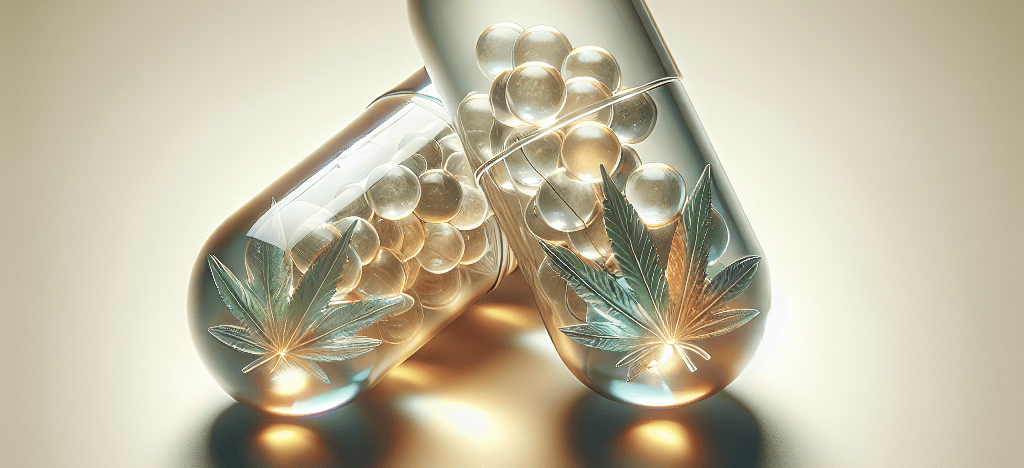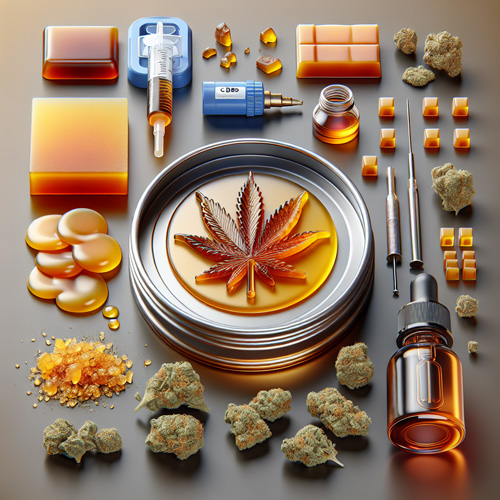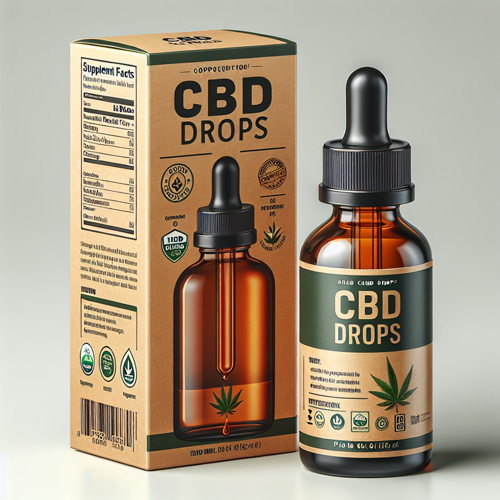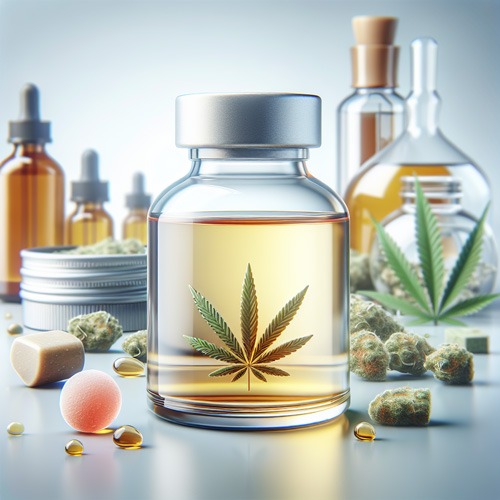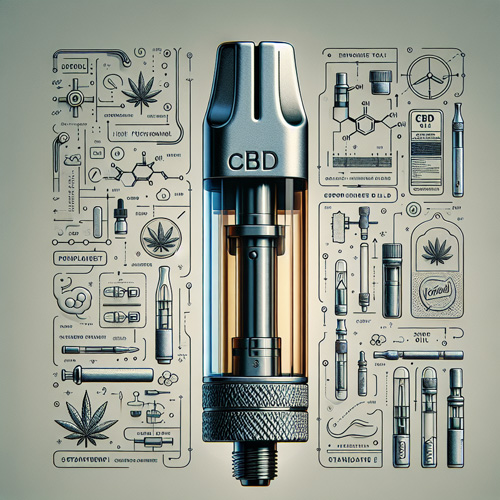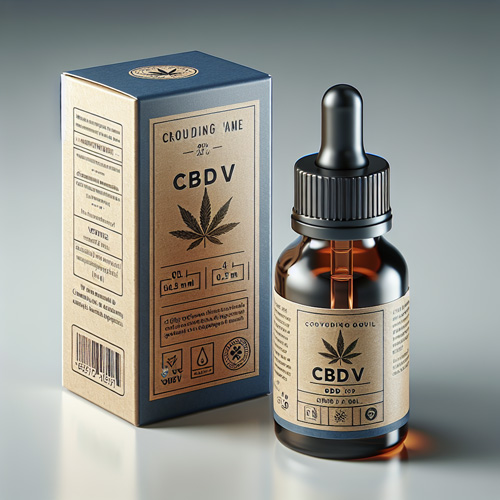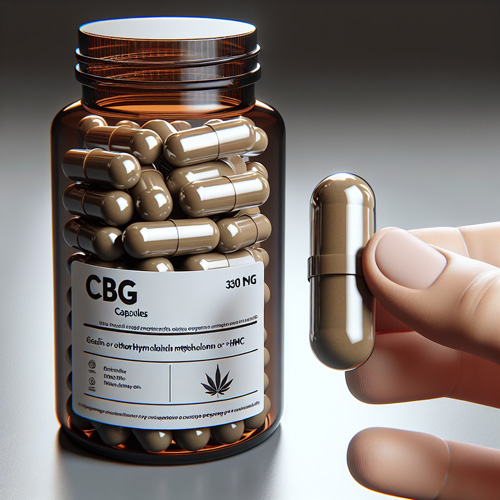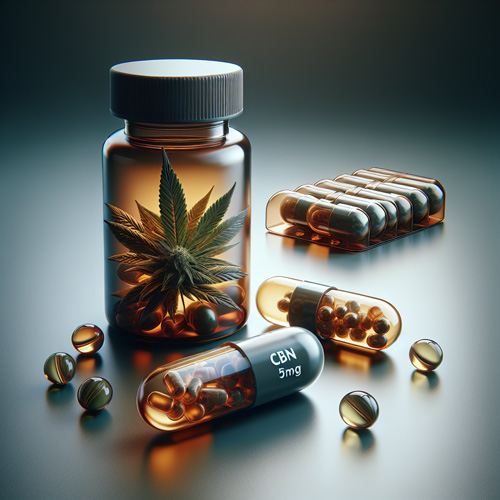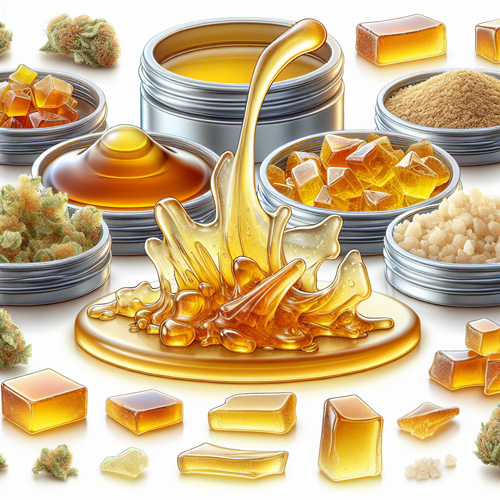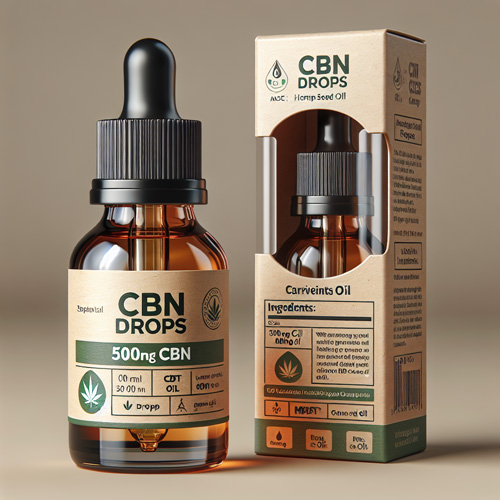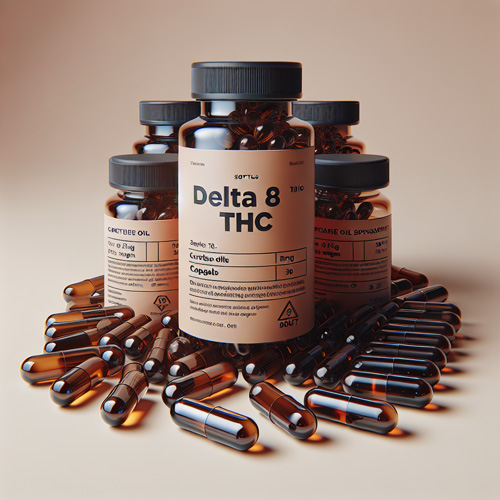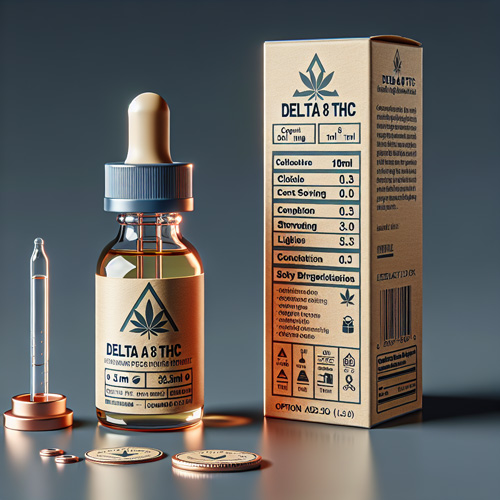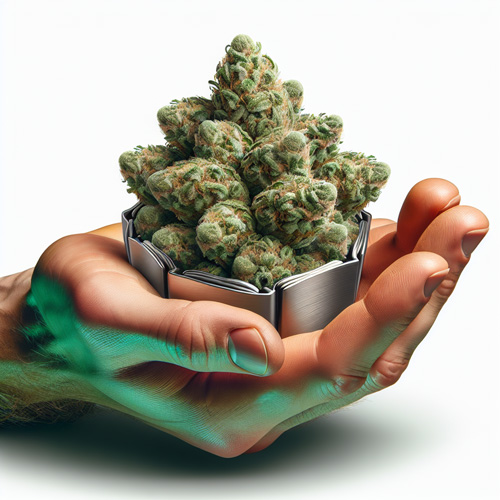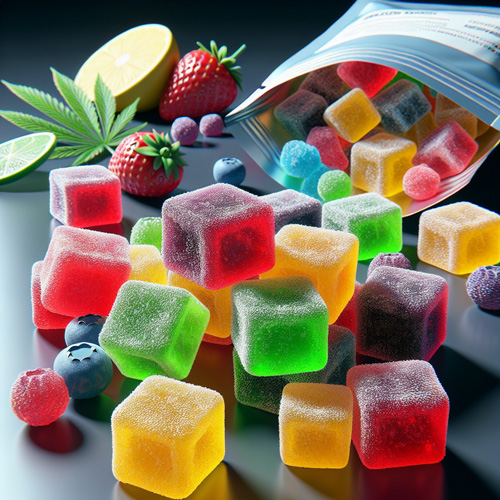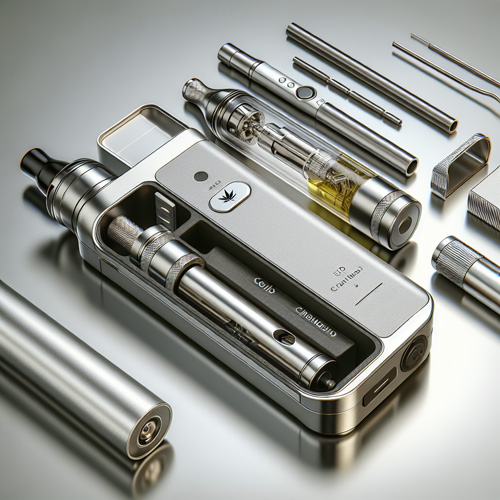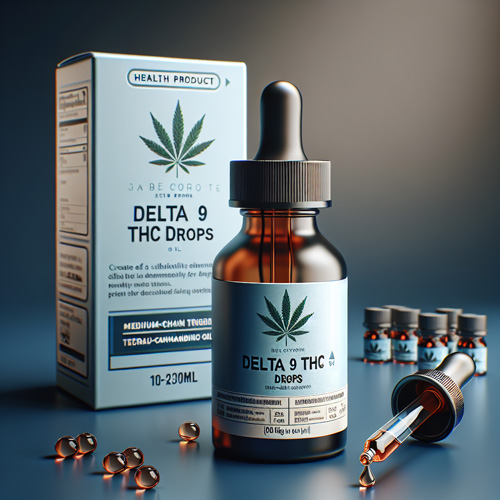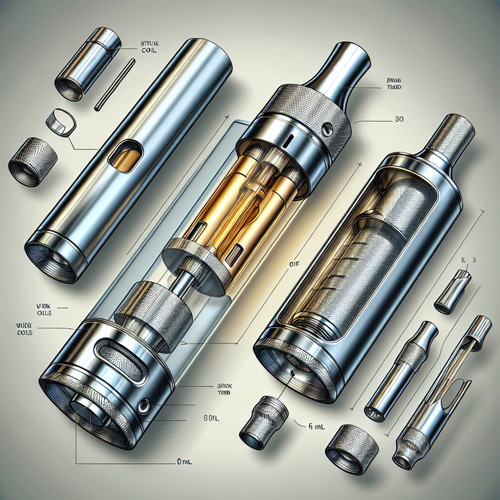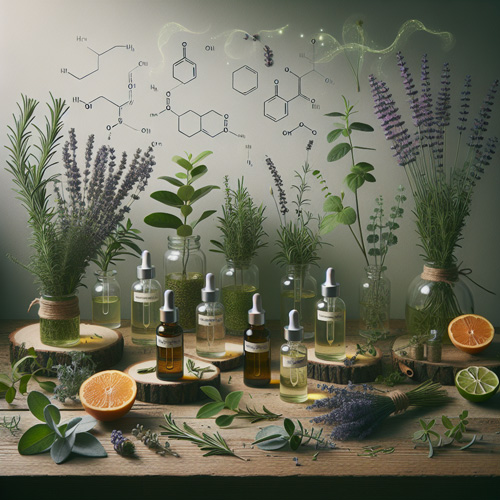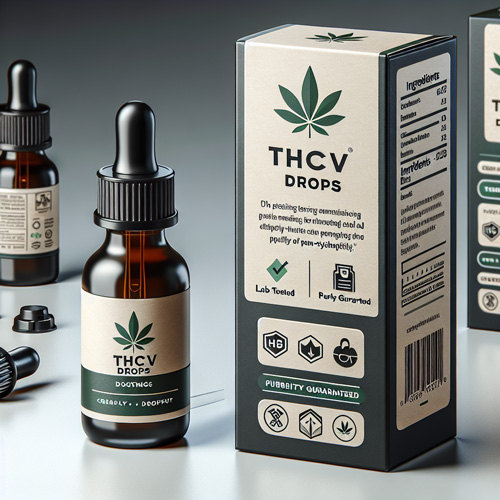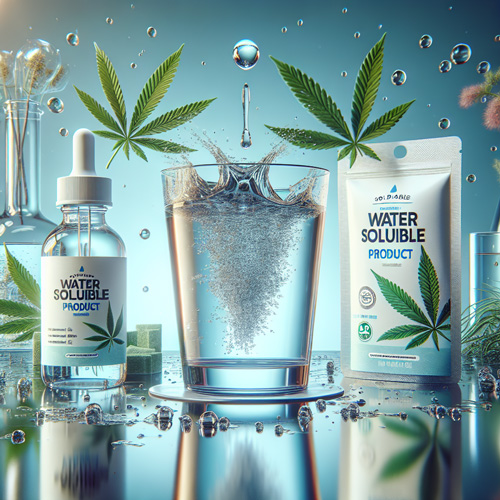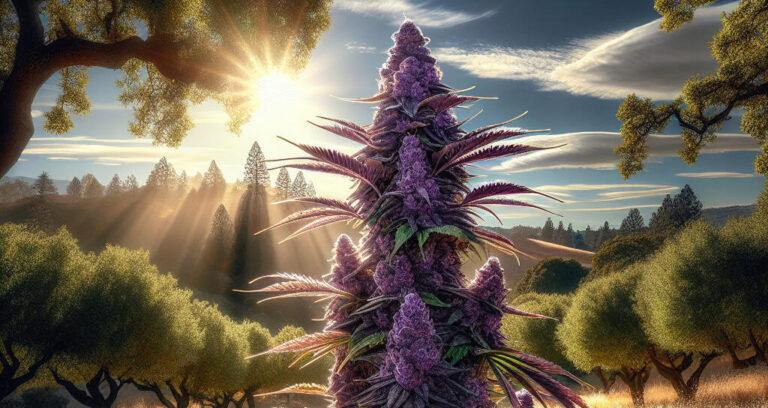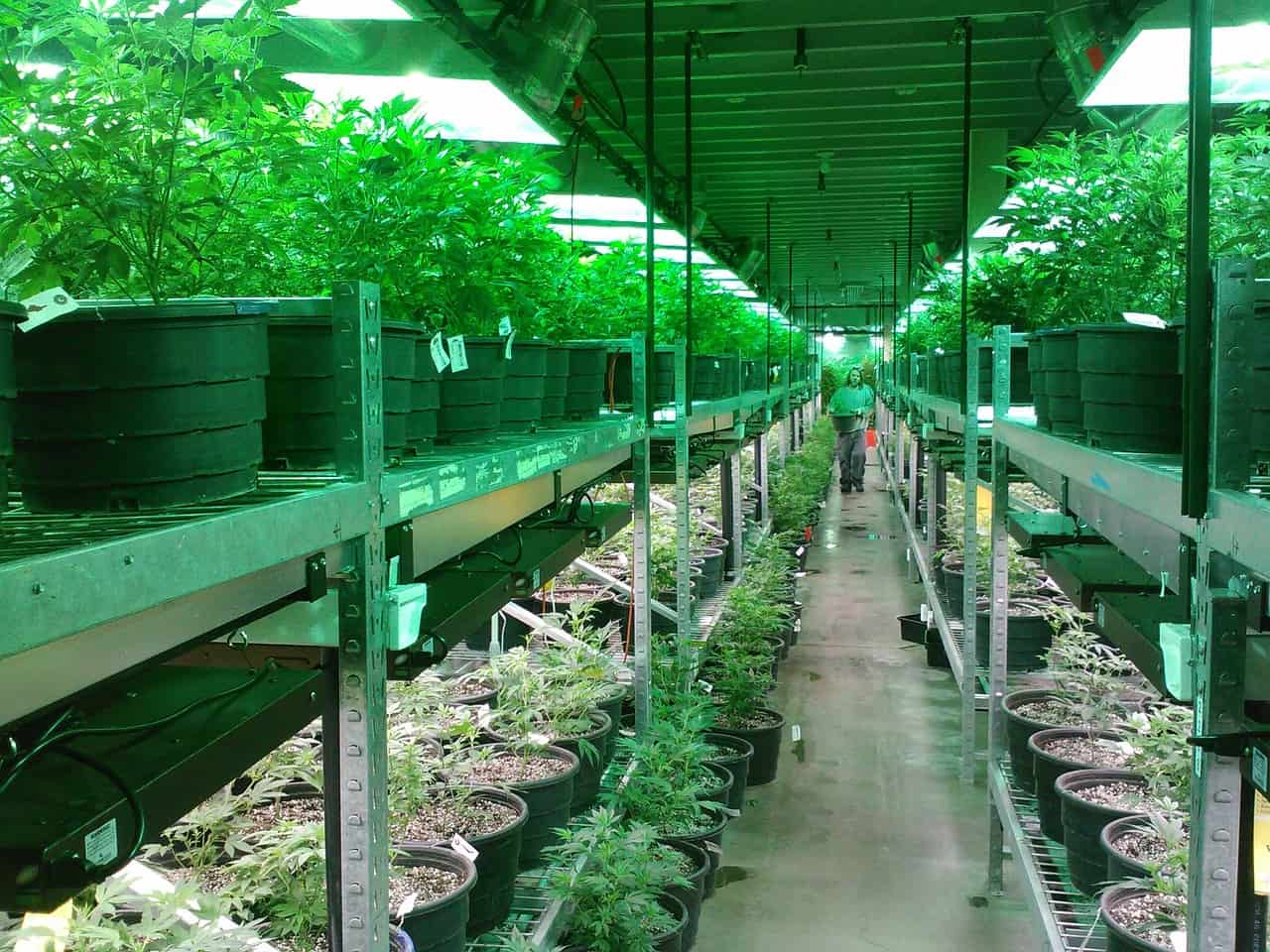
The Influence of Growing and Cultivation Practices on THCa Levels
THCa, or tetrahydrocannabinolic acid, is a non-psychoactive cannabinoid found in cannabis plants.
It is the precursor to THC, the psychoactive compound that is primarily responsible for the recreational and medicinal effects of consuming cannabis. THCa has gained significant attention in recent years due to its potential therapeutic benefits.
However, it is important to note that THCa itself does not produce intoxicating effects, and it is only when it undergoes decarboxylation, typically through heat, that it converts into THC. The levels of THCa in cannabis can vary depending on various factors, including the specific strain, cultivation practices, and environmental conditions.
Understanding the influence of growing and cultivation practices on THCa levels is crucial for growers and producers looking to optimize cannabinoid profiles and potentially enhance the therapeutic potential of their cannabis plants.
Overview of the Relevance of THCa
THCa holds great relevance in the world of cannabis cultivation and potency determination. As the precursor acid form of THC, the psychoactive compound in cannabis flowers, THCa plays a crucial role in the production of the desired effects.
The levels of THCa in cannabis flowers can be influenced by various cultivation practices and environmental factors. One key factor is the flowering stage, where plants transition from vegetative growth to the production of flowers. During this stage, the synthesis of THCa increases, contributing to the overall cannabinoid profile.
Other cultivation practices like plant density, light spectra, and air circulation also impact THCa levels. Additionally, factors such as plant height, canopy development, and yield per plant can influence THCa content. The use of LED treatments and specific light spectrums, such as blue light, have shown promising results in enhancing THCa synthesis.
Moreover, environmental factors like temperature, humidity, and nutrient availability can significantly affect THCa production. The use of organic fertilizers and optimal nutrient management can positively contribute to the synthesis of THCa.
Understanding the factors that affect THCa synthesis and potency in cannabis flowers is essential for growers and consumers alike. By employing the right cultivation practices and considering environmental factors, producers can maximize THCa levels, ultimately influencing the potency and effects of the final product.
Growing & Cultivation Practices
Growing and cultivation practices play a crucial role in influencing the levels of THCa in cannabis flowers. These practices encompass various factors, including the flowering stage, plant density, light spectra, air circulation, plant height, canopy development, and yield per plant. The use of LED treatments and specific light spectrums, such as blue light, have been found to have a positive impact on THCa synthesis. Additionally, environmental factors like temperature, humidity, and nutrient availability also significantly affect THCa production. By implementing optimal cultivation practices and environmental management, cultivators can enhance the THCa content in cannabis flowers, thus achieving desired cannabinoid profiles.
Plant Density
Plant density, or the number of plants per unit area, plays a crucial role in the cultivation of cannabis plants and can significantly influence the levels of THCa, the precursor to THC, in the harvested plant material.
Several studies have examined the impact of plant density on cannabinoid concentrations and yields. For example, research by Chandra et al. (2021) found that increasing plant density resulted in a decrease in THCa levels on a dry weight basis. Similarly, Vanhove et al. (2021) observed a negative correlation between plant density and THCa concentrations and inflorescence yield in their study on industrial hemp.
Optimal plant density for maximizing phytocannabinoid production may vary depending on several factors, including the cultivation method and desired cannabinoid profile. However, it is generally recommended to maintain a plant density that allows for adequate light interception and CO2 assimilation rates. This is because light interception is essential for photosynthesis, which is responsible for cannabinoid synthesis in the plant.
Plant density plays a significant role in determining THCa levels in cannabis plants. Studies have indicated that higher plant densities can lead to lower cannabinoid concentrations and yields. Therefore, it is important for cannabis cultivators to carefully consider plant density to optimize phytocannabinoid production. Adequate light interception and CO2 assimilation rates are crucial factors to consider when determining the optimal plant density.
Light Spectrum & Intensity
Light spectrum and intensity play a crucial role in influencing THCa levels, as well as other secondary metabolites, in cannabis cultivation. However, the understanding of their exact effects on THC production remains limited and contradictory.
Research studies have shown that different light spectra, such as blue, green, and red light, can affect secondary metabolite production in cannabis. For instance, studies by Chandra et al. and Caplan et al. have demonstrated that shifts in light spectrum, specifically increasing the proportion of blue light, can enhance THC production. On the other hand, other studies have disagreed, suggesting that different light spectra may not have a significant impact on THC levels.
Similarly, the relationship between light intensity and THC production is not fully understood. Some studies have reported that higher light intensities can lead to increased THC production, while others have found no significant correlation. These contradictory findings may be due to variations in experimental conditions, such as different cultivars, growth stages, and light treatments.
One major challenge in evaluating the influence of light quality on THC production is the lack of standardization in experiments. Variability in light sources, intensity measurements, and spectral quality measurement methods make it difficult to compare results across studies. Additionally, different cultivars of cannabis may have varying responses to different light spectra and intensities, further complicating the interpretation of results.
Overall, while light spectrum and intensity have been implicated in influencing THC production, the current understanding is limited and contradictory. Further research is needed to establish standardized experimental protocols and identify the specific light conditions that optimize secondary metabolite production in cannabis cultivation.
Air Circulation
Air circulation plays a crucial role in cannabis cultivation practices as it helps to maintain a healthy and optimal growing environment. Proper air circulation prevents the buildup of heat, humidity, and stagnant air, which can lead to numerous issues including pest and disease problems.
In cannabis cultivation, heat prevention is essential as excessive heat can stress the plants, hinder growth, and even cause irreversible damage. Adequate air circulation helps to dissipate heat and maintain optimal temperatures within the growing area. It allows for heat to be evenly distributed, ensuring that plants receive consistent and appropriate temperature levels throughout the cultivation space.
Humidity control is another critical aspect of cannabis cultivation. High humidity levels can create a favorable environment for the growth of mold, mildew, and other pathogens. Insufficient air circulation can contribute to the buildup of humidity, especially in areas with poor ventilation. By promoting healthy airflow, air circulation helps to reduce humidity levels and discourage the proliferation of these harmful microorganisms.
The use of fans or other ventilation systems is common in cannabis cultivation to ensure proper air circulation. Fans can be strategically placed to create a gentle breeze that moves air around the plants. Additionally, ventilation systems, such as exhaust fans or air exchange systems, can be implemented to maintain a constant flow of fresh air, expel stagnant air, and regulate humidity levels.
Air circulation is vital in cannabis cultivation practices. It aids in heat prevention, humidity control, and the prevention of pest and disease problems. By implementing proper airflow through the use of fans or ventilation systems, cultivators can create an optimal growing environment for healthy and robust cannabis plants.
Soil Composition & Nutrient Levels
Soil composition and nutrient levels play a crucial role in determining the THCa levels in cannabis plants during the growing and cultivation process. The soil provides the foundation for plant growth and development, supplying essential nutrients that directly impact the potency and phytocannabinoid production, including THC levels.
Different nutrient concentrations in the soil can significantly affect THC potency and overall phytocannabinoid production. For instance, nitrogen, phosphorus, and potassium are three key macronutrients that directly influence plant growth and cannabinoid synthesis. Adequate levels of these macronutrients are essential for the biosynthesis of cannabinoids, including THCa. Insufficient nutrient concentrations can lead to stunted growth and lower cannabinoid yields, while excessive levels can negatively impact the plant’s health.
Moreover, the nutrient requirements of cannabis plants vary depending on the specific cultivar or strain. Each cultivar has its own distinct characteristics, including variations in nutrient requirements and the resulting phytocannabinoid profile. It is important for cultivators to understand and provide the specific nutrient needs of different cultivars to optimize THCa levels and overall cannabinoid concentrations.
Soil composition and nutrient levels play a significant role in influencing THC potency and phytocannabinoid production in cannabis plants. Providing an appropriate balance of essential nutrients tailored to each cultivar’s specific requirements is essential for maximizing THCa levels and achieving desired cannabinoid profiles. By understanding and implementing proper soil composition and nutrient management practices, cultivators can enhance the quality and consistency of their cannabis crops.
Watering Regiment
The watering regiment in cannabis cultivation is a crucial aspect that directly affects phytocannabinoid production. Water availability plays a significant role in the growth and development of cannabis plants, including the synthesis of phytocannabinoids such as THCa.
Water stress, which refers to inadequate water availability, can have a detrimental impact on flower yield and the concentration of phytocannabinoids. Insufficient water supply during critical stages of plant growth, such as the flowering stage, can reduce the overall biomass and yield of the flowers. This can subsequently lead to lower concentrations of phytocannabinoids, including THCa.
Several factors influence the response of cannabis plants to water stress. Genotype plays a role, as different cultivars may exhibit varying degrees of tolerance or sensitivity to water restriction. The intensity and frequency of water restriction also affect plant response, with severe and prolonged water stress causing more significant negative effects.
When evaluating the impact of water stress on phytocannabinoid production, specific metabolites are often considered. These metabolites can include cannabinoids, terpenes, and other secondary metabolites that contribute to the overall chemical profile of cannabis plants.
A well-managed watering regiment that ensures adequate water availability is crucial for optimizing phytocannabinoid production in cannabis cultivation. Water stress can significantly impact flower yield and the concentration of phytocannabinoids, making it essential to provide the appropriate water requirements for optimal plant growth and cannabinoid synthesis.
Temperature & Humidity
Temperature and humidity are crucial environmental factors that can significantly influence THCa levels in cannabis plants. Variations in these factors can have a direct impact on the production and accumulation of THCa, the precursor to THC (delta-9-tetrahydrocannabinol), the primary psychoactive component of cannabis.
Temperatures that are too high or too low can negatively affect THCa production. High temperatures can lead to the degradation of THCa, resulting in reduced levels of this cannabinoid. Conversely, low temperatures can slow down metabolic processes and enzyme activity, inhibiting THCa synthesis. To optimize THCa levels, it is important to maintain a temperature range of 20-30°C (68-86°F) during the flowering stage.
Humidity levels also play a crucial role in THCa production. High humidity levels can create favorable conditions for fungal and microbial growth, which can harm the plant and impede THCa production. On the other hand, low humidity levels can lead to excessive transpiration and water loss, causing stress to the plant and hindering THCa synthesis. Maintaining a relative humidity range of 40-60% is recommended for optimal THCa production.
It is important to note that the response of cannabis plants to temperature and humidity can vary depending on genetic characteristics. Different cultivars may exhibit different sensitivities to these environmental factors, which can impact THCa yields. Therefore, understanding the interplay between temperature, humidity, and genetic factors is essential for maximizing THCa levels in cannabis cultivation.
Plant Height & Canopy Structure
Plant height and canopy structure can significantly influence THCa levels in cannabis plants. The height of the plants and the arrangement of the foliage can impact light penetration, air circulation, and overall plant health, thus affecting THCa production.
Taller plants with a well-developed canopy structure have a greater surface area for photosynthesis and light absorption. This allows for more efficient conversion of light energy into chemical energy, promoting higher THCa synthesis. Additionally, taller plants tend to have a larger number of flowering sites, which can contribute to increased THCa production.
On the other hand, plants with shorter stature and a sparse canopy may have reduced light exposure and limited photosynthetic capacity. This can result in lower THCa levels. Furthermore, poor air circulation within a dense canopy can create microclimates that promote fungal and microbial growth, potentially compromising THCa production.
Different cultivation practices can impact plant morphology, including plant height and stem dry weight. Factors such as light spectra, plant density, and air circulation can influence these morphological characteristics. For example, studies have shown that plants grown under blue light treatments tend to have shorter stature and lower stem dry weight compared to those grown under other light spectra.
Understanding the influence of plant height and canopy structure on THCa levels can help cultivators optimize their growing practices to achieve desired cannabinoid profiles. Proper pruning, training, and canopy management techniques can be employed to maximize light exposure and air circulation, promoting healthy growth and optimal THCa production.
Pruning Techniques
Pruning plays an important role in cannabis cultivation, offering growers various techniques to enhance productivity and optimize plant morphology. Three commonly used pruning techniques in cannabis cultivation are cover pruning, defoliation, and branch removal.
Cover pruning involves removing the larger leaves shading the lower branches, allowing more light to reach the lower parts of the canopy. This technique promotes increased photosynthesis and light absorption, leading to improved secondary metabolite yield and cannabinoid concentrations in the plant. Cover pruning can also improve air circulation within the canopy, reducing the risk of fungal and microbial growth.
Defoliation requires removing a significant number of leaves from the plant. By reducing leaf mass, defoliation stimulates hormonal changes that can influence plant development. Some studies suggest that defoliation can increase the production of secondary metabolites and improve overall morphology, resulting in higher inflorescence biomass.
Branch removal involves selectively removing specific branches from the plant. By doing so, resources can be redirected to other branches, promoting their growth and development. Branch removal can be useful in managing plant density and maximizing light penetration within the canopy, ultimately enhancing the production of secondary metabolites and cannabinoid concentrations.
Several studies have investigated the effects of pruning techniques on cannabis cultivation. For example, research has shown that cover pruning and defoliation can increase cannabinoid concentrations and inflorescence biomass. However, it is important to note that the optimal pruning technique may vary depending on the specific cultivar and physiological stage of the plant.
Pruning techniques such as cover pruning, defoliation, and branch removal can have significant impacts on cannabis cultivation. These techniques can improve productivity, alter plant morphology, and create favorable microclimatic conditions. Further research is needed to fully understand the optimal pruning practices for different cannabis cultivars and growth stages.
Flowering Stage Duration & Timing
The flowering stage of cannabis plants plays a crucial role in determining the levels of THCa, the precursor to THC, in the final product. The duration and timing of this stage have a significant impact on the accumulation of THCa in cannabis plants.
The flowering stage typically occurs after a vegetative growth period and is characterized by the development of flowers or buds. During this stage, the plant redirects its energy towards producing cannabinoids, including THCa. The longer the flowering stage lasts, the more time the plant has to synthesize and accumulate THCa.
However, timing is also crucial. The optimal duration and timing for maximizing THCa production can vary depending on the cultivar and desired cannabinoid profile. Harvesting too early can result in lower THCa levels, as the plant may not have had enough time to fully develop and accumulate cannabinoids. On the other hand, waiting too long into the flowering stage can lead to the degradation of THCa into THC, resulting in lower levels of THCa in the final product.
To maximize THCa production, it is important to closely monitor and determine the ideal flowering stage duration based on the specific cultivar and desired cannabinoid concentrations. This can involve observing trichome development and color changes, as well as conducting regular testing of THCa levels to ensure optimal harvest timing.
The duration and timing of the flowering stage significantly impact the accumulation of THCa in cannabis plants. Finding the optimal balance between these factors is crucial for maximizing THCa production and obtaining the desired cannabinoid profile in the final product.
Effects on Cannabinoid Profiles & Yields
The cultivation practices and growing conditions of cannabis plants have a significant impact on the cannabinoid profiles and yields, including the levels of THCa.
Factors such as light spectra, air circulation, plant density, plant height, and environmental conditions play crucial roles in determining the synthesis and accumulation of cannabinoids. The choice of cultivation method, whether indoor or outdoor, also affects the cannabinoid concentrations in the harvested plant material.
Furthermore, the use of specific cultivation techniques, such as LED treatments or organic fertilizers, can influence the production of secondary metabolites, including cannabinoids. Therefore, growers need to carefully consider these variables to optimize the THCa content and overall cannabinoid yield in their cannabis plants.
Regular monitoring, testing, and adjustments to cultivation practices are essential to achieve the desired cannabinoid profiles and yields. By understanding the influence of cultivation practices on THCa levels, growers can maximize the potential of their cannabis plants for medicinal or recreational purposes.
Major Cannabinoids Content Increase/Decrease with Different Growing Conditions
Major cannabinoids content in cannabis plants, including THC, CBD, THCV, and CBG, can be influenced by various growing conditions. One key factor that impacts cannabinoid levels is the light spectrum. Studies have shown that different light spectra can lead to variations in cannabinoid profiles. For instance, blue light has been associated with an increase in THC content, while green light has shown potential in boosting CBD production.
Apart from light spectrum, light intensity also plays a role in cannabinoid synthesis. Higher light intensities have been observed to result in elevated THC levels, while lower intensities may favor CBD production. Additionally, cultivation practices such as pruning, training, and plant density can influence cannabinoid concentrations. Adjusting these practices can lead to higher THC, CBD, THCV, or CBG content, depending on the desired outcome.
Furthermore, the choice of lighting technology can impact cannabinoid concentrations. High-pressure sodium (HPS) and LED treatments have been compared, with LED treatments often producing higher THC content compared to HPS. LED lights offer more control over light spectrum and intensity, enabling growers to fine-tune cannabinoid profiles to their preferences.
In conclusion, major cannabinoids content in cannabis plants is highly influenced by growing conditions such as light spectrum, intensity, and cultivation practices. By understanding these factors, growers can manipulate cannabinoid levels to achieve desired outcomes and optimize their cultivation process.
Secondary Metabolites Production Changes in Different Growing Conditions
The production of secondary metabolites in cannabis plants can be significantly influenced by various growing conditions. One important factor is the light spectrum. Different light spectrums, such as blue, green, or red light, can trigger distinct metabolic pathways in the plant, leading to variations in secondary metabolite production. For example, blue light has been found to enhance the synthesis of certain cannabinoids, while red light promotes the accumulation of others.
Temperature and humidity are also critical considerations. Optimal temperature ranges can stimulate the enzymatic processes responsible for secondary metabolite production. High temperatures might hinder the production of specific metabolites or even degrade them altogether. Similarly, maintaining appropriate humidity levels can ensure the plant’s physiological processes function optimally, allowing for the efficient synthesis and accumulation of secondary metabolites.
Pruning techniques and nutrient levels further impact secondary metabolite production. Pruning can influence the structure and vigor of the plant, potentially altering metabolite synthesis pathways. Proper nutrient levels, including macronutrients and micronutrients, play a crucial role in supporting the plant’s metabolic processes involved in secondary metabolite production.
It is crucial for growers to carefully consider these factors to achieve their desired secondary metabolite profiles in cannabis plants. By manipulating light spectrum, temperature, humidity, pruning techniques, and nutrient levels, growers can encourage the synthesis of specific secondary metabolites, ultimately influencing the cannabinoid concentration and overall chemical composition of the plant.
Conclusion
This article discussed the ways in which different growing and cultivation practices can impact major cannabinoid content, such as THC, CBD, THCV, and CBG. We explained how factors such as light spectrum, light intensity, and plant density can influence cannabinoid levels. Additionally, it examined how different lighting technologies can further affect cannabinoid production. Finally, it explores the various ways in which secondary metabolites are impacted by temperature, humidity, pruning techniques, and nutrient levels. Ultimately, growers must be aware of and master these factors to achieve their desired cannabinoid profiles in cannabis plants.
